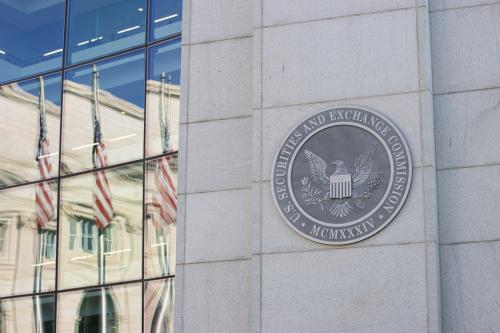Yesterday saw the release of the most important element of the Obama administration’s climate agenda, dubbed the Clean Power Plan. In it, the EPA proposes a state-centric framework for regulating greenhouse gas (GHG) emissions from existing power plants. If implemented as proposed, every state will have to submit a plan by 2016 that charts a path to 30% GHG emission reductions in 2030 relative to their 2005 baseline through a combination of state regulations imposing efficiency improvements, shifts in energy generation toward nuclear or renewables (or from coal toward natural gas), and demand-side efficiency programs. To some observers, this looks like the culmination of a long struggle to transform America’s rhetoric about the danger of climate change into action.
At most, it is the end of the beginning.
A quick look at the politics and the law at issue should explain why. Congress has had two historic moments of legislating to address air pollution issues, in 1970 and 1990. In 1970, global warming was on nobody’s agenda; in 1990, it was explicitly debated and consciously left out of the bipartisan Clean Air Act Amendments. In 2009-2010, Democrats controlling Congress made promising strides toward a comprehensive law, with the House passing the Waxman-Markey bill to create a national cap-and-trade system. But no Senate counterpart ever passed; America’s elected representatives at the national level remained basically silent on the issue of climate change.
That legislative vacuum was filled up through repurposing the Clean Air Act as a vehicle for climate change regulation—a task to which it was in many ways poorly suited, having been designed to combat local air pollution issues rather than a global, systemic issue. A Supreme Court majority pushed that process along in 2007 with Massachusetts v. EPA. After that ruling, the conventional wisdom was that the impending possibility of awkward bureaucratic action on GHG emissions would inspire Congress to quickly and decisively provide clarity. But seven years later, we are still waiting for the legislation while the bureaucratic action has nearly arrived.
Nearly, but not quite yet. As too many reports on yesterday’s action under-emphasize, the administration’s proposal will not be finalized for another year. (And that is optimistic: EPA’s rule for newly-constructed power plants was first proposed back in March 2012, only to be revised and then re-proposed in autumn 2013, and still yet to be finalized more than two years after its debut.) Only then will court cases begin in earnest, with power companies (especially ones with large coal portfolios) certain to contest the rules as beyond the true scope of Clean Air Act.
Those national-level legal challenges may well be rebuffed, meaning that the shape of EPA’s rule will be judicially ratified sometime around 2017. (That is, let us suppose that we will see the fulfillment of a great cosmic legal irony as the NRDC-inspired Obama administration plan benefits from a strong dose of Chevron deference.) That will hardly be the end of the legal struggle, however. At that point there will still be a long, contentious path ahead involving both political and legal contestation at the state levels; some governors will find it politically advantageous to defy “bureaucrats in Washington” and regulated companies will take advantage of the numerous opportunities for defiance that state legal processes afford them. The Clean Power Plan as proposed now will require states to begin hitting reduction targets in 2020, but it is not so hard to imagine the law in many states failing to clear all of the legal hurdles until well into the 2020s.
That doesn’t mean we’ll just see stalemate in the meantime. As Brookings’ Barry Rabe and Mark Muro optimistically argue, experimentation at the state and local level has been given a boost by the new rules, and that will be true even if a legal shadow hangs over the rule. Regional cap-and-trade systems, including California’s and RGGI in the Northeast, are likely to gain momentum, for better or for worse. And there is certainly a case for “worse,” which is that all of this action may ultimately distract from the really coordinated and innovative actions that may be required to make real progress on the difficult climate issue, as argued by Jonathan Adler.
In short, the proposal of the Clean Power Plan sets the scene for a long struggle that will unfold over many years and Presidential administrations, and that can only be resolved with real certainty by new congressional action. Settle in for the fight—it’s likely to go the distance.



Commentary
The Political and Legal Future of Obama’s Proposed Clean Power Plan
June 3, 2014